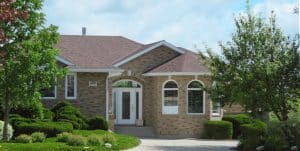Living Buildings: Architecture That Breathes
Welcome to the world of living buildings, where architecture literally breathes. This innovative approach to sustainable and eco-friendly design is gaining traction across the globe, as more and more architects and builders embrace the concept of creating structures that interact with the natural environment. In this article, we will delve into the fascinating world of living buildings, exploring their benefits, design principles, and examples of this cutting-edge architectural trend.
The Concept of Living Buildings
Living buildings, also known as biomimetic or biophilic buildings, are designed to function like living organisms. They use natural elements, such as water, air, and sunlight, to create a self-sustaining ecosystem within the structure. This not only reduces the building’s environmental impact but also creates a healthier and more comfortable living and working space for its inhabitants.
Unlike traditional buildings that rely on mechanical systems for temperature control and lighting, living buildings mimic nature’s processes to achieve the same results. For example, they use passive solar design to harness sunlight for heating, natural ventilation for cooling, and rainwater harvesting for water supply.
The Benefits of Living Buildings
Sustainability
One of the main benefits of living buildings is their sustainability. By functioning as a self-sustaining ecosystem, these structures reduce their reliance on non-renewable resources and minimize their carbon footprint. They also contribute to the preservation of natural resources, as they use resources like water and energy more efficiently.
Health and Wellbeing
Living buildings are designed with human health and wellbeing in mind. By incorporating natural elements, such as vegetation and natural lighting, these structures create a more pleasant and comfortable living and working environment. This has been shown to improve productivity, reduce stress, and promote physical and mental wellbeing.
Biodiversity and Habitat Preservation
Living buildings also play a crucial role in preserving biodiversity and creating habitats for native species. The green spaces within these structures provide food and shelter for birds, insects, and other wildlife, contributing to the preservation of local ecosystems. In some cases, living buildings are built in areas of high biodiversity, creating a new habitat for endangered species.
Design Principles of Living Buildings
Integration with the Natural Environment
The design of living buildings prioritizes their integration with the natural environment. This includes optimizing the orientation of the building to maximize natural light and ventilation, incorporating green spaces and vegetation into the structure, and using natural materials in construction.
Energy Efficiency
Living buildings are designed to be highly energy-efficient, using renewable energy sources, such as solar and wind power, to generate electricity. They also use passive design techniques, such as shading and thermal mass, to reduce the need for artificial cooling and heating.
Water Conservation
Living buildings prioritize water conservation by incorporating features such as rainwater harvesting, greywater recycling, and water-efficient fixtures. These measures not only reduce the building’s water usage but also ease the strain on local water resources.
Examples of Living Buildings
The Bullitt Center, Seattle
This six-story office building has been hailed as one of the greenest and most advanced buildings in the world. It is designed to generate more energy than it consumes, using solar panels and geothermal heat pumps. It also features a rainwater collection system, composting toilets, and an innovative façade that responds to changing weather conditions, allowing for natural heating and cooling.
The Edge, Amsterdam
The Edge is a state-of-the-art office building that has been awarded the highest sustainability ratings in the world. It features a smart lighting system that adjusts to natural light, an aquifer thermal energy storage system for heating and cooling, and a rooftop greenhouse that provides fresh produce for its employees. The building also collects and recycles rainwater for irrigation and toilet flushing.
The Tree Tower, Milan
This stunning residential building, designed by renowned architect Stefano Boeri, is built as a vertical forest. It features over 900 trees and thousands of plants, creating a natural habitat for birds and insects in the heart of the city. The trees and plants also serve to purify the air and reduce the building’s energy consumption.
Conclusion
Living buildings represent the future of sustainable and eco-friendly architecture. By mimicking nature’s processes, these structures create not only a smaller environmental footprint but also a healthier and more harmonious living and working environment for humans and wildlife alike. As the world’s population continues to grow, the demand for sustainable housing and workspaces will only increase, making living buildings a vital solution for a more sustainable future.




